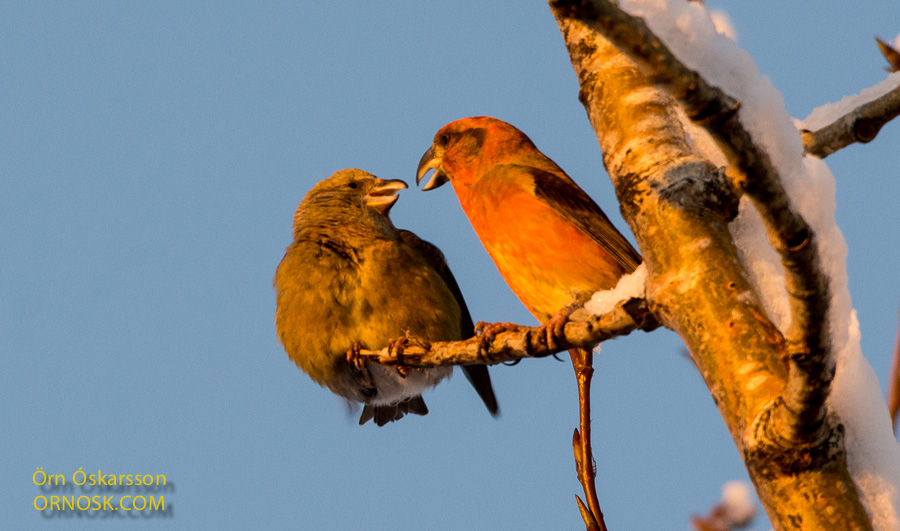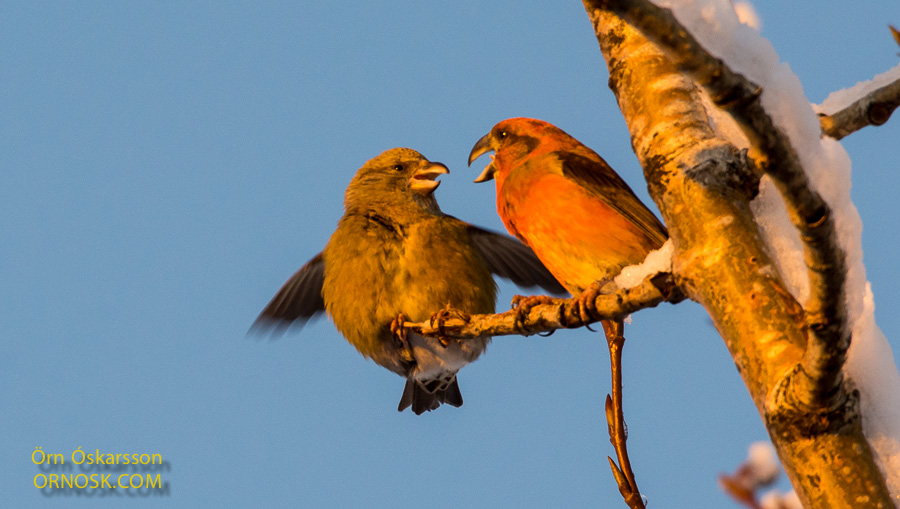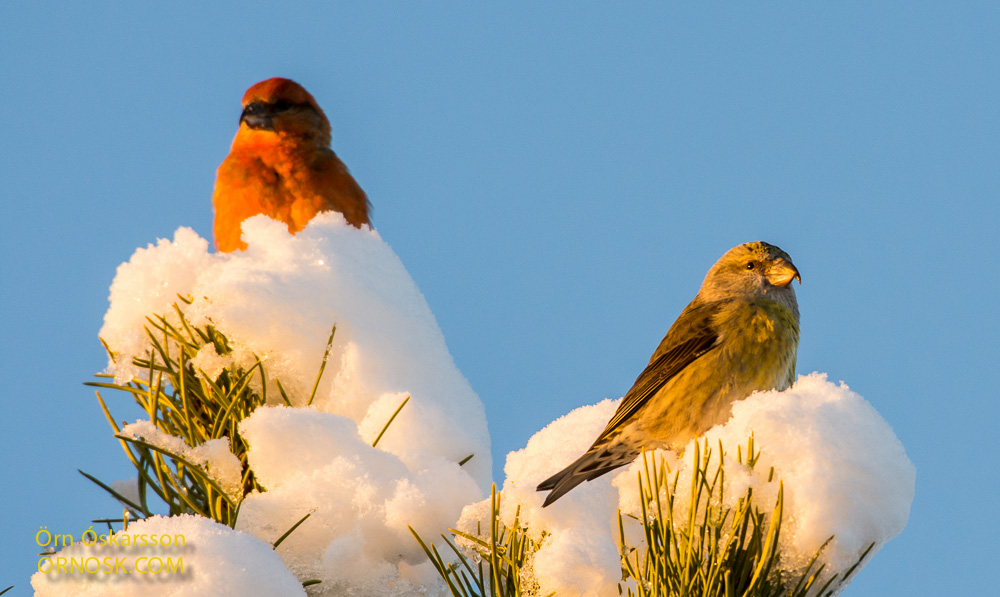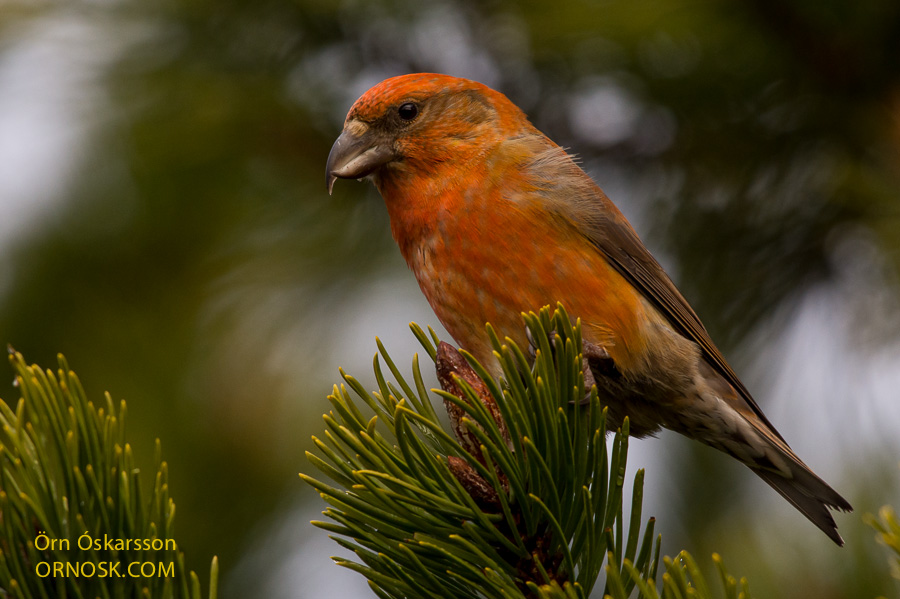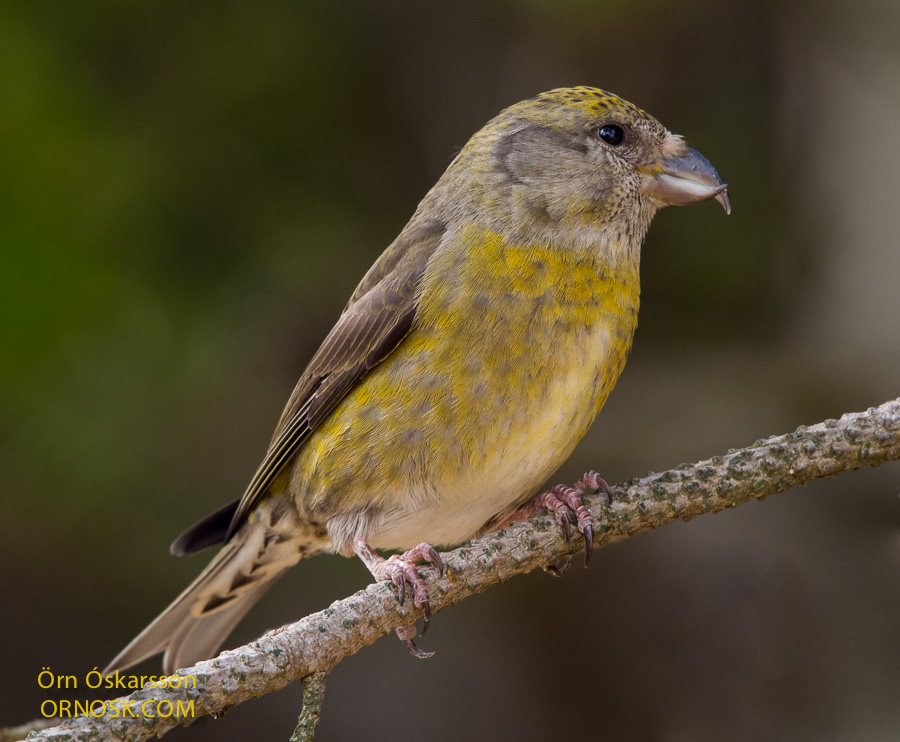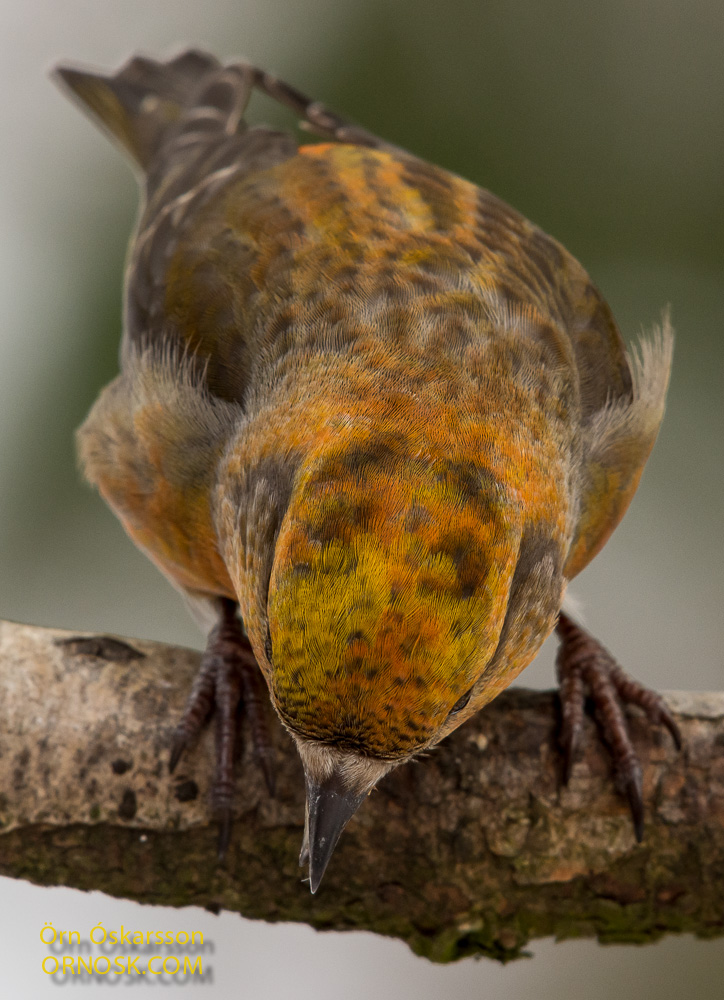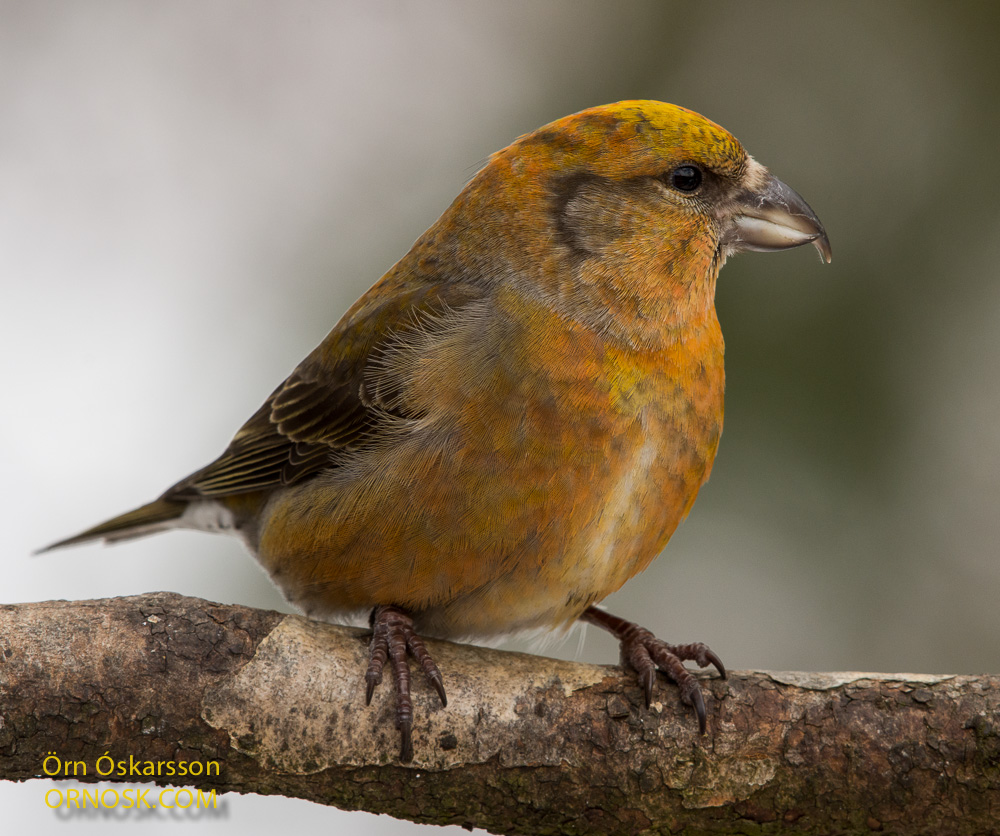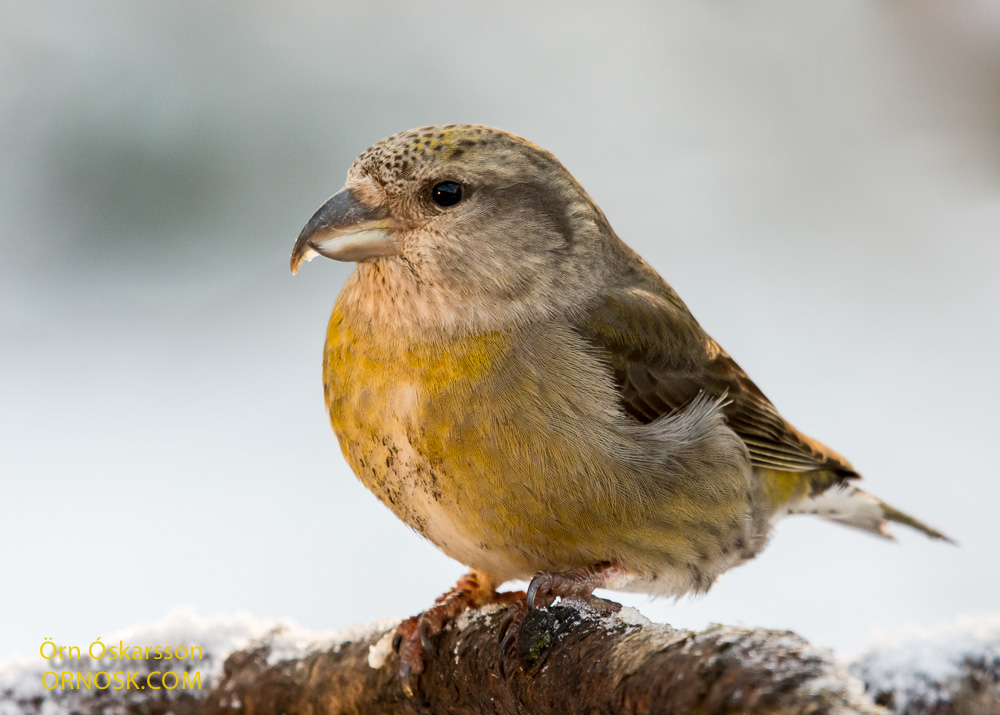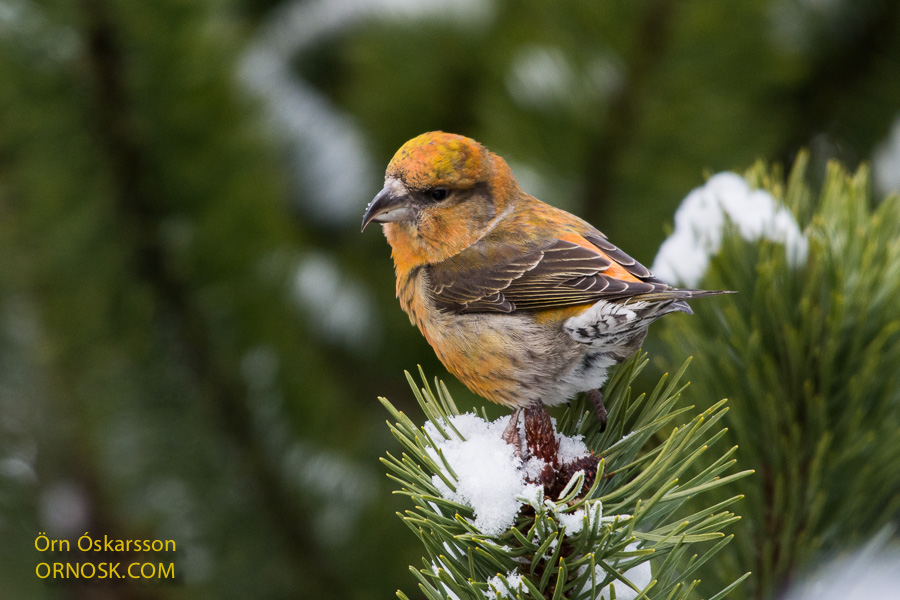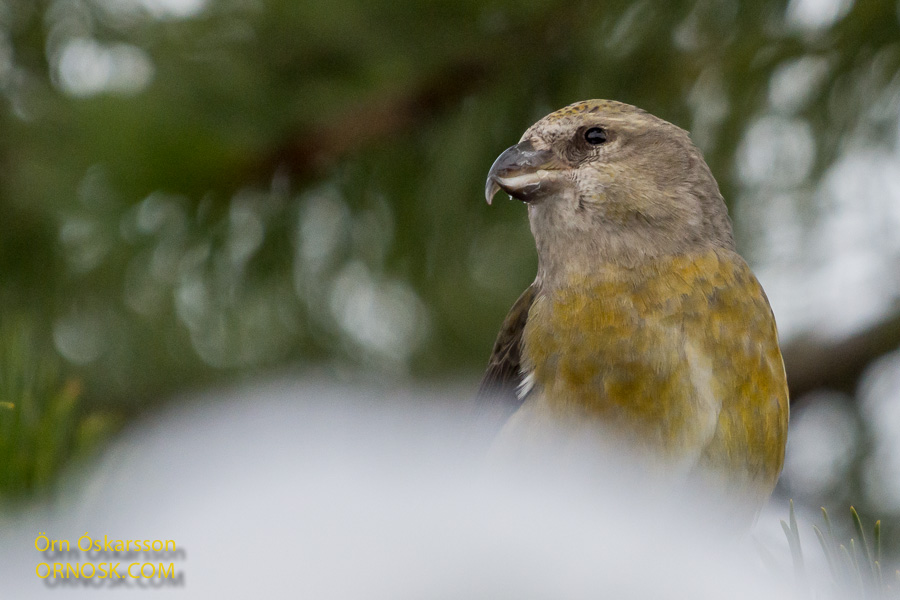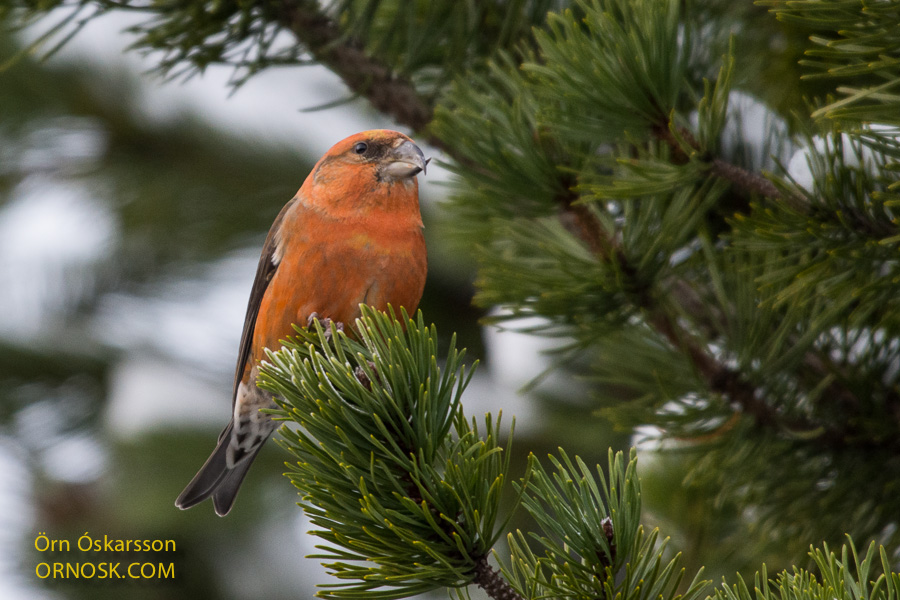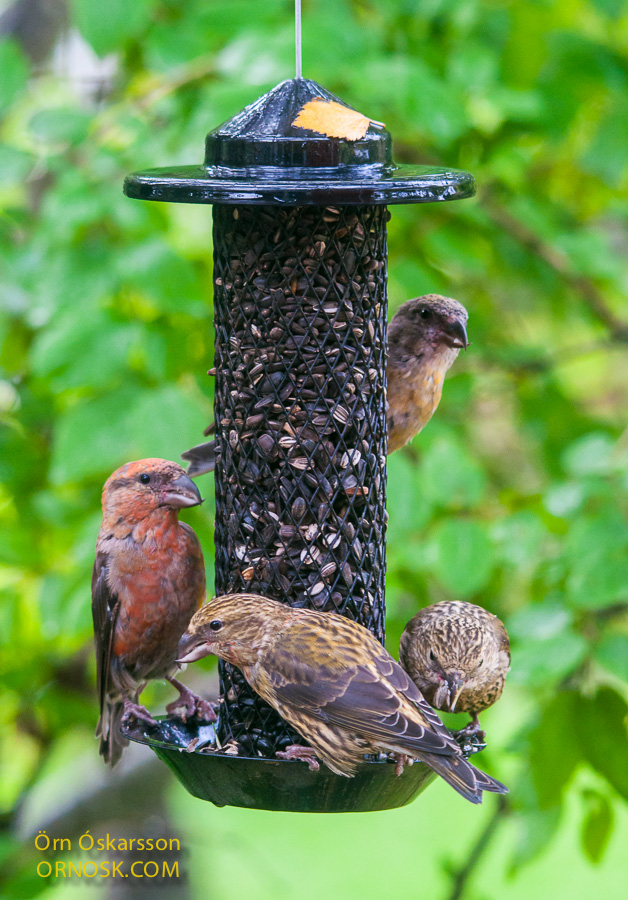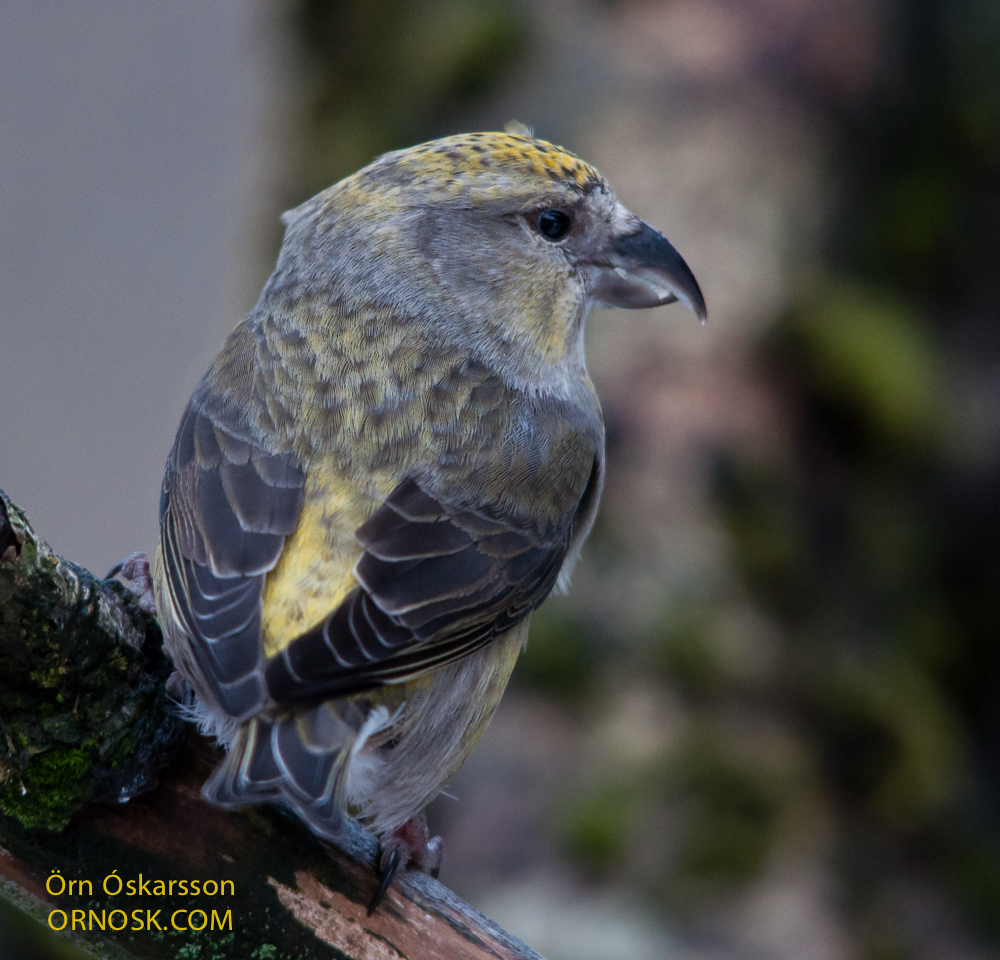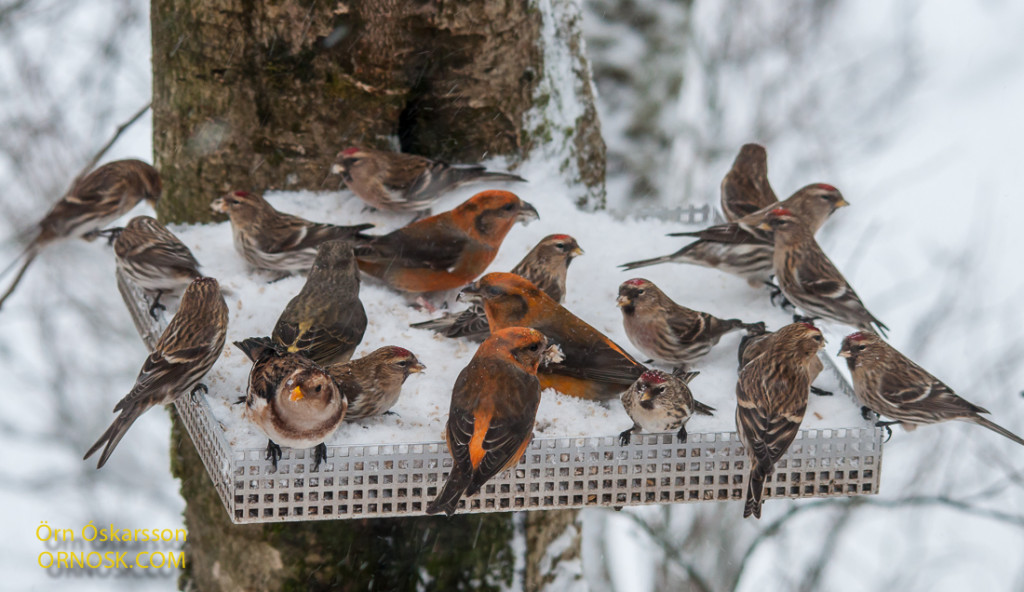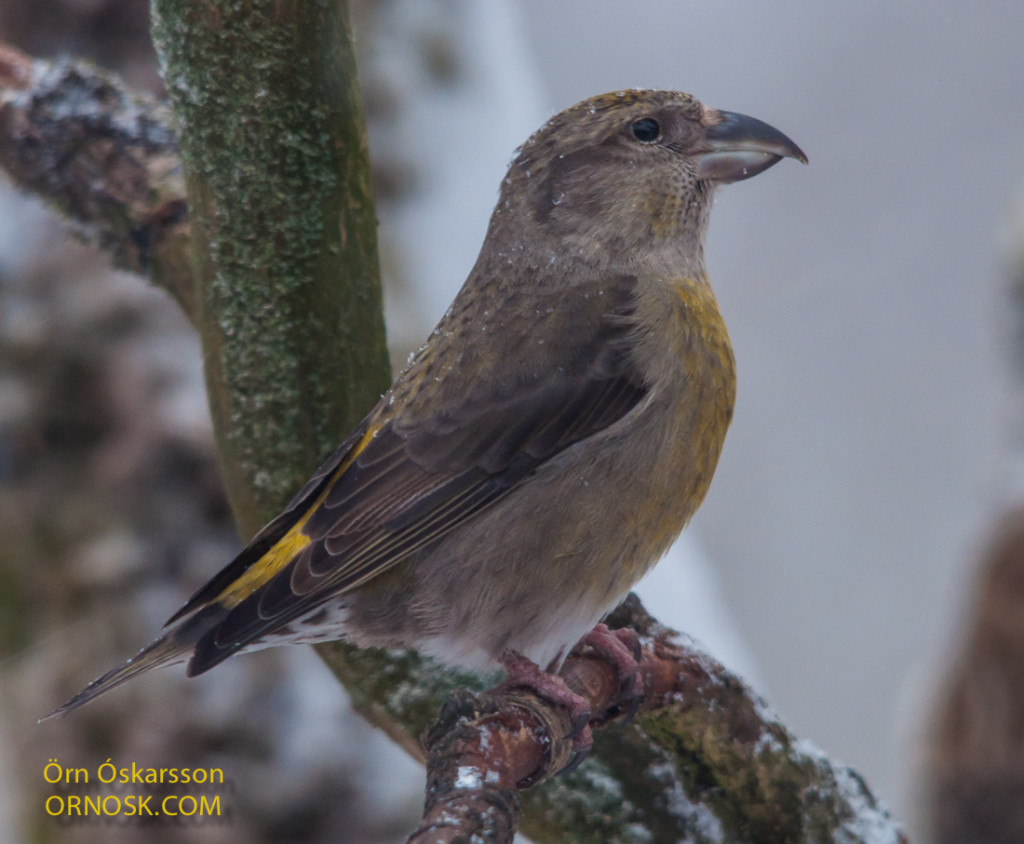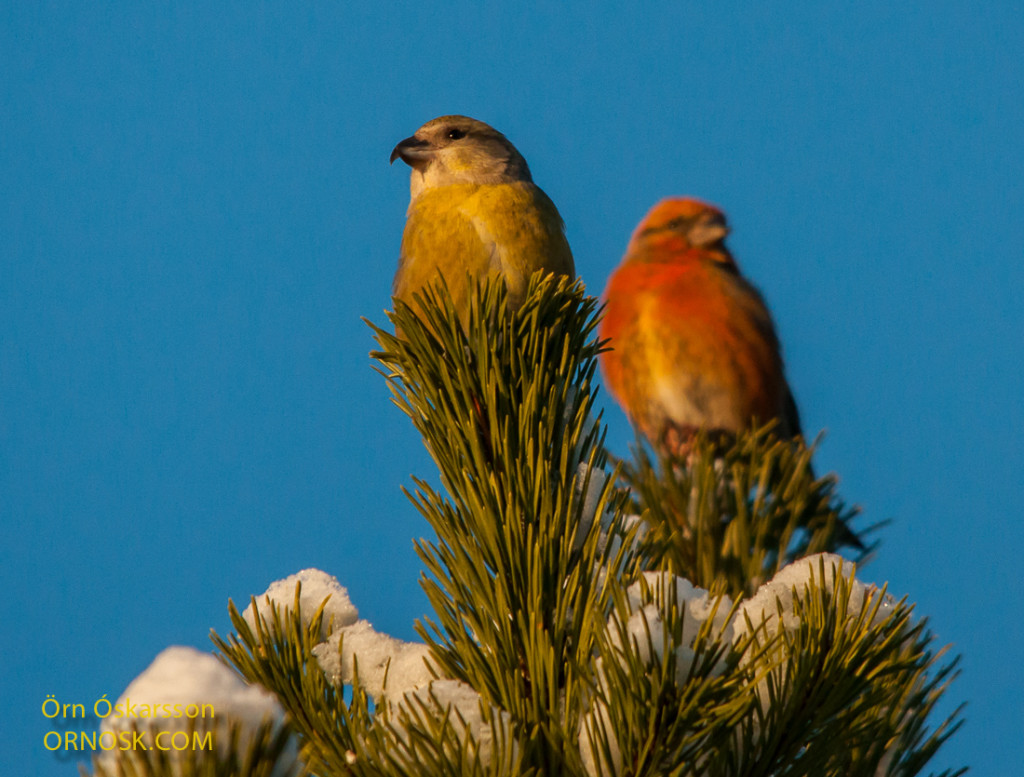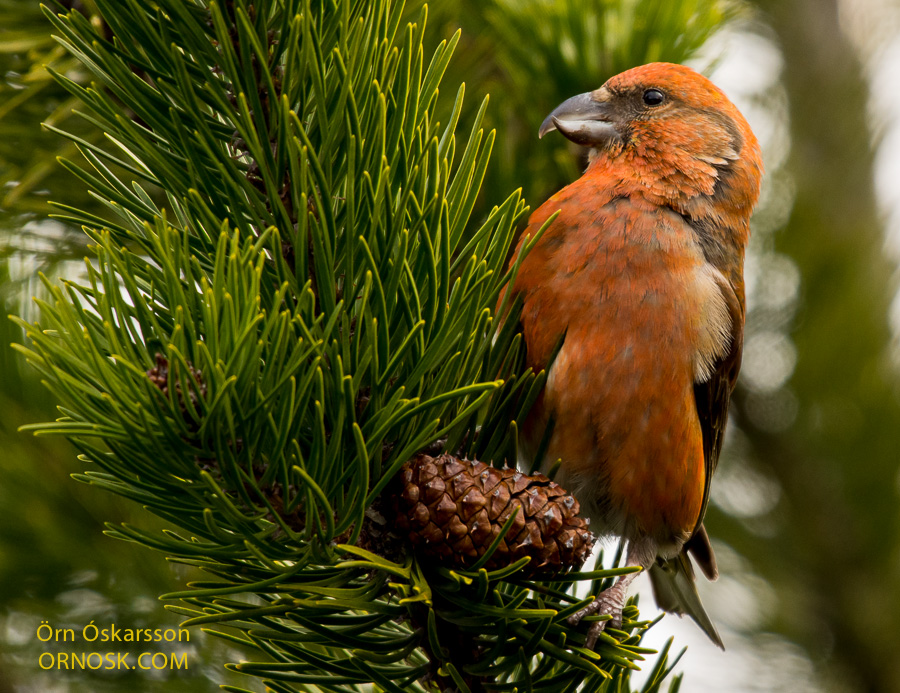
In Grímsnes, South Iceland, the Crossbills are busy eating seed from the cones of the Pinus contorta tree. Although the cones have not yet opened properly they manage to get to the seeds. They use their distinctively shaped beak, which they get their name from, to open the cones and with their tongue they fish the seed or nut out.
The Contorta pine goes under several names such as Lodgepole pine, Shore pine and also Twisted pine. The Common Crossbill usually prefers seed from spruce cones but in South Iceland there are more pines than spruces so pine seeds are their main food source, at least in the spring.



